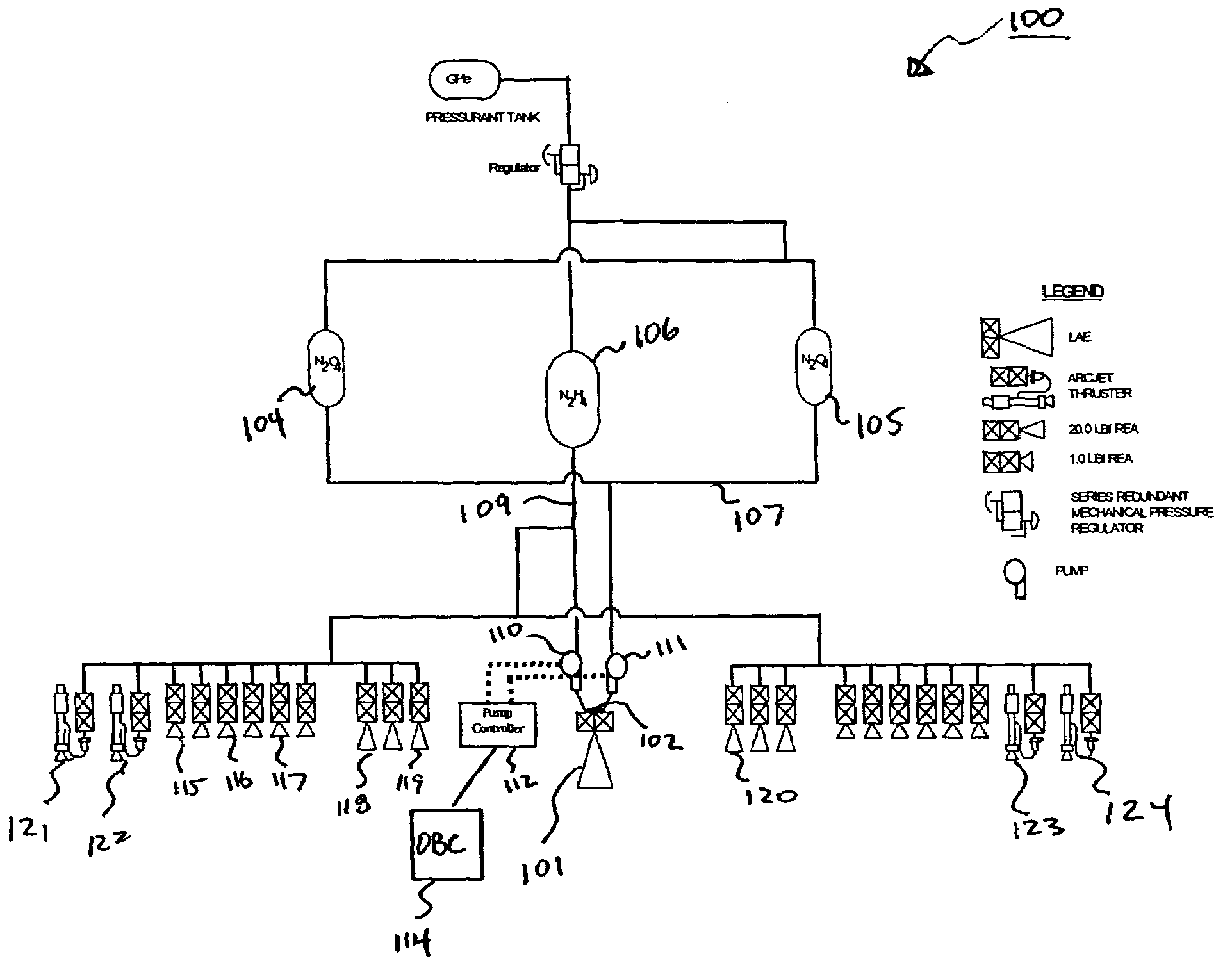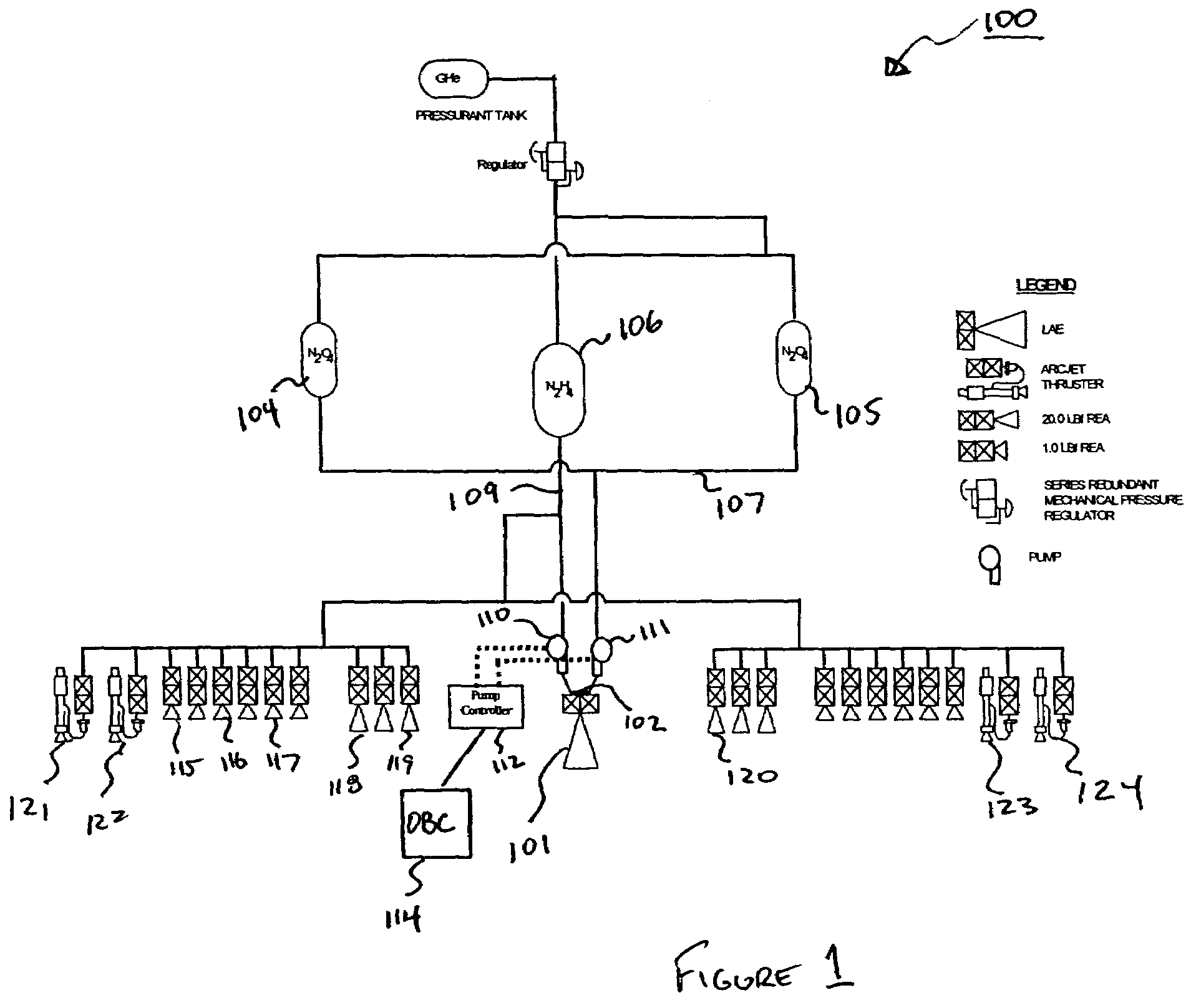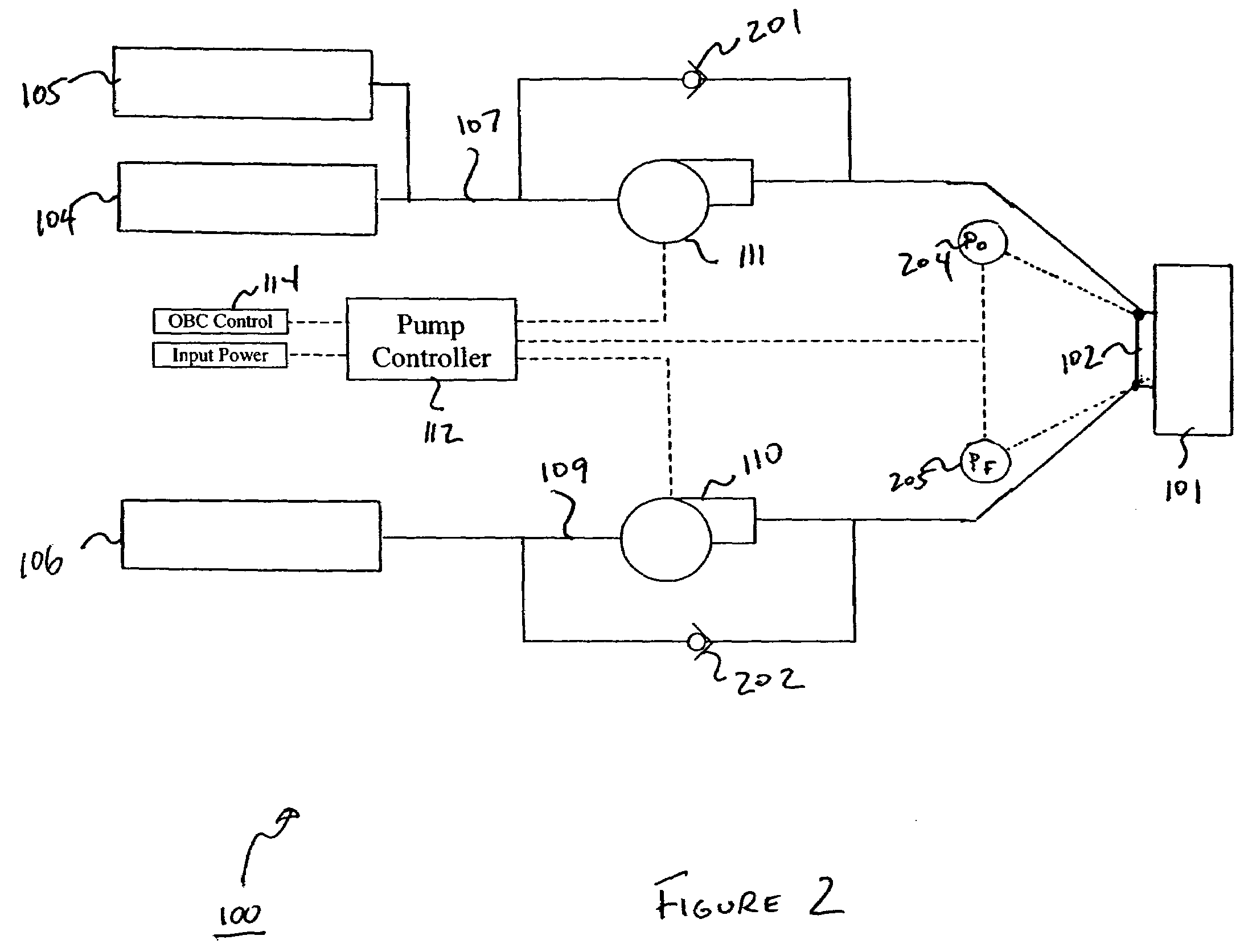Enhanced high-efficiency spacecraft propulsion system
a propulsion system and high-efficiency technology, applied in the field of spacecraft, can solve the problems of limiting the effectiveness of conventional turbopumps, affecting the performance of spacecraft, and not being able to achieve missions that are viable using conventional orbit transfer systems, etc., to achieve the effect of reducing the incompatibility of materials, reducing the cost of spacecraft, and improving the selection of seal materials and geometry
- Summary
- Abstract
- Description
- Claims
- Application Information
AI Technical Summary
Benefits of technology
Problems solved by technology
Method used
Image
Examples
Embodiment Construction
[0031]FIG. 1 depicts a propulsion system according to one embodiment of the present invention. Briefly, according to the FIG. 1 embodiment, the propulsion system includes an LAE which further includes a plurality of inlets. The propulsion system also includes a plurality of propellant tanks each in fluid communication with the plurality of inlets via a propellant line, and a plurality of low-mass electric pumps. Each of the plurality of low-mass electric pumps is inserted in one of the propellant lines, where the plurality of low-mass electric pumps provide LAE inlet pressure between 500 pounds-force per square inch absolute (psia) and 1000 psia.
[0032]The system according to the present invention separates the pump function from the LAE, simplifying the LAE design. Since the pump is separate, new pump development is not required if the LAE model is changed, and the pump technology may be upgraded independently without impacting the LAE design. An on-board computer controls the oxidi...
PUM
 Login to View More
Login to View More Abstract
Description
Claims
Application Information
 Login to View More
Login to View More - R&D
- Intellectual Property
- Life Sciences
- Materials
- Tech Scout
- Unparalleled Data Quality
- Higher Quality Content
- 60% Fewer Hallucinations
Browse by: Latest US Patents, China's latest patents, Technical Efficacy Thesaurus, Application Domain, Technology Topic, Popular Technical Reports.
© 2025 PatSnap. All rights reserved.Legal|Privacy policy|Modern Slavery Act Transparency Statement|Sitemap|About US| Contact US: help@patsnap.com



